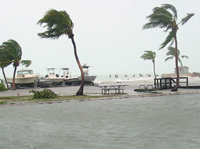Advanced
Search
Search A to Z
|
 |
Biologic
Resources
Wisdom
is striving to preserve and protect the integrity,
stability, and beauty of the animal and plant life
in our national parks. |
|
Mission
To preserve, protect, and
manage biological resources and related ecosystem processes
in the National Park System |
What
We Do
Provide expert
scientific, planning, and evaluation assistance
on management actions and biological resource
management issues |
Headlines 
December 12, 2003
Detecting Chronic Wasting Disease |
 |
Ecosystem
Restoration
Many
park sites have been disturbed
by human activities. Parks work
aggressively to restore native
species and processes and conditions
that support those species, to
these areas.
more  |
 |
Invasive
Species Management
Non-indigenous
plants and animals are the second
greatest threat to native species,
after habitat loss. Included in
this program are the Exotic Plant
Management Teams (EPMT). The EPMTs
work to rid the national parks
of exotic plants.
more  |
 |
Integrated
Pest Management
Some plants,
insects, and rodents can interfere
with park objectives and must be
managed. The Integrated Pest Management
Program reduces the risk from pests
and pest management related activities.
more  |
|
 |
Migratory
Birds
The Migratory
Bird Program works to conserve,
protect, and restore migratory
bird populations from raptors and
songbirds to shorebirds in National
Parks.
more  |
 |
Threatened
and Endangered Species
In many regions,
parks protect the last remnants
of our native ecosystems. These
remnants are prime habitat for
threatened and endangered species.
more  |
 |
Wildlife
Health and Disease
Diagnosis,
prevention, and control of wildlife
diseases can protect wildlife resources
and human health.
more  |
 |
Wildlife
Management
Addresses
issues of wildlife management with
emphasis on overpopulation, restoration
and technical assistance, and training
to National Park Service personnel
for wildlife management and research.
more  |
|
|

Hurricane
Charlie at Dry Tortugas National Park, NPS Photo |
DID YOU KNOW?
Our
forest and grasslands are constantly changing. Some
species become more prominent and others decline
in a patchwork pattern across a large area. NPS allows
natural processes to shape these changes, often represented
as “seral” stages of vegetation. While
hurricanes can have serious negative consequences,
they can also have positive effects.
Events like Hurricanes Ivan, Charlie, and Frances
are important
because they help reshape our resources in the landscape,
and help many species that are dependent on new
patches created by these events. Although seen positively
for our natural resources, hurricanes can carry seed
of undesirable species, and our land managers must
be vigilant to prevent this from happening while
allowing for natural regeneration of forests and
grasslands to occur.
archive  |
|
